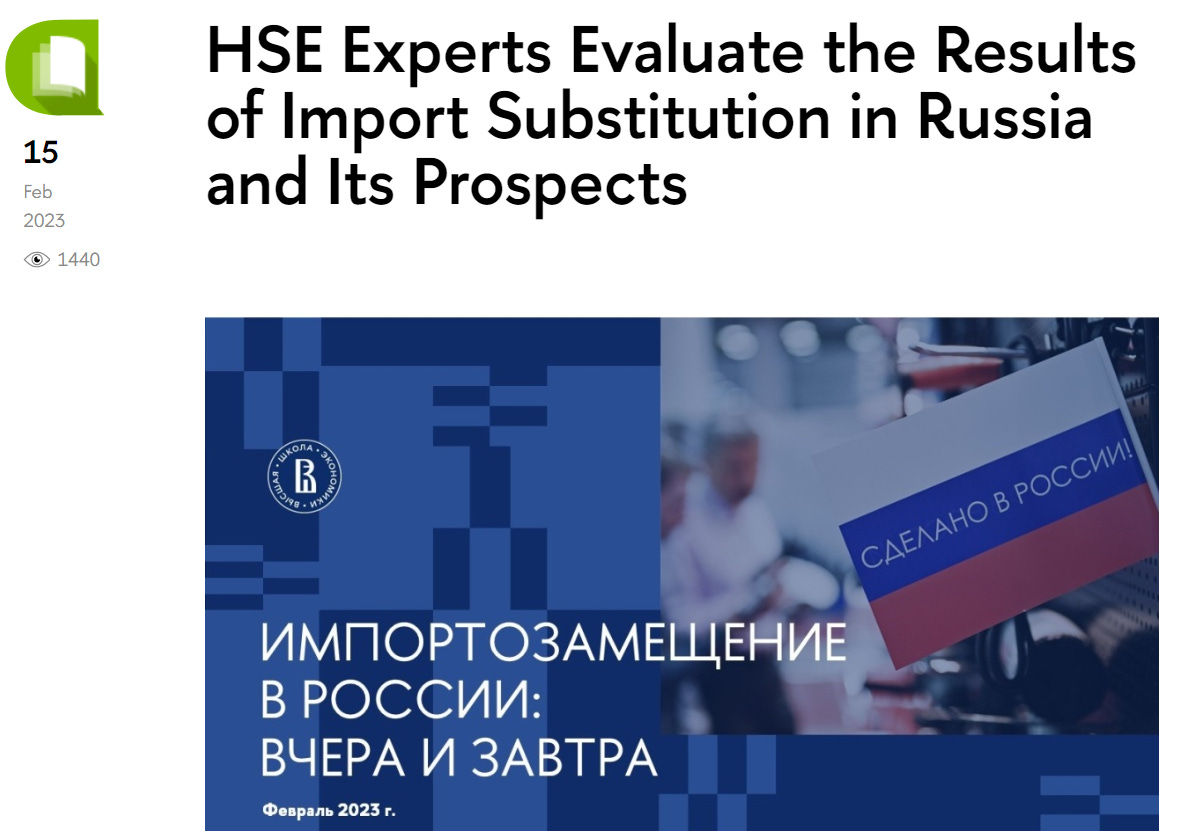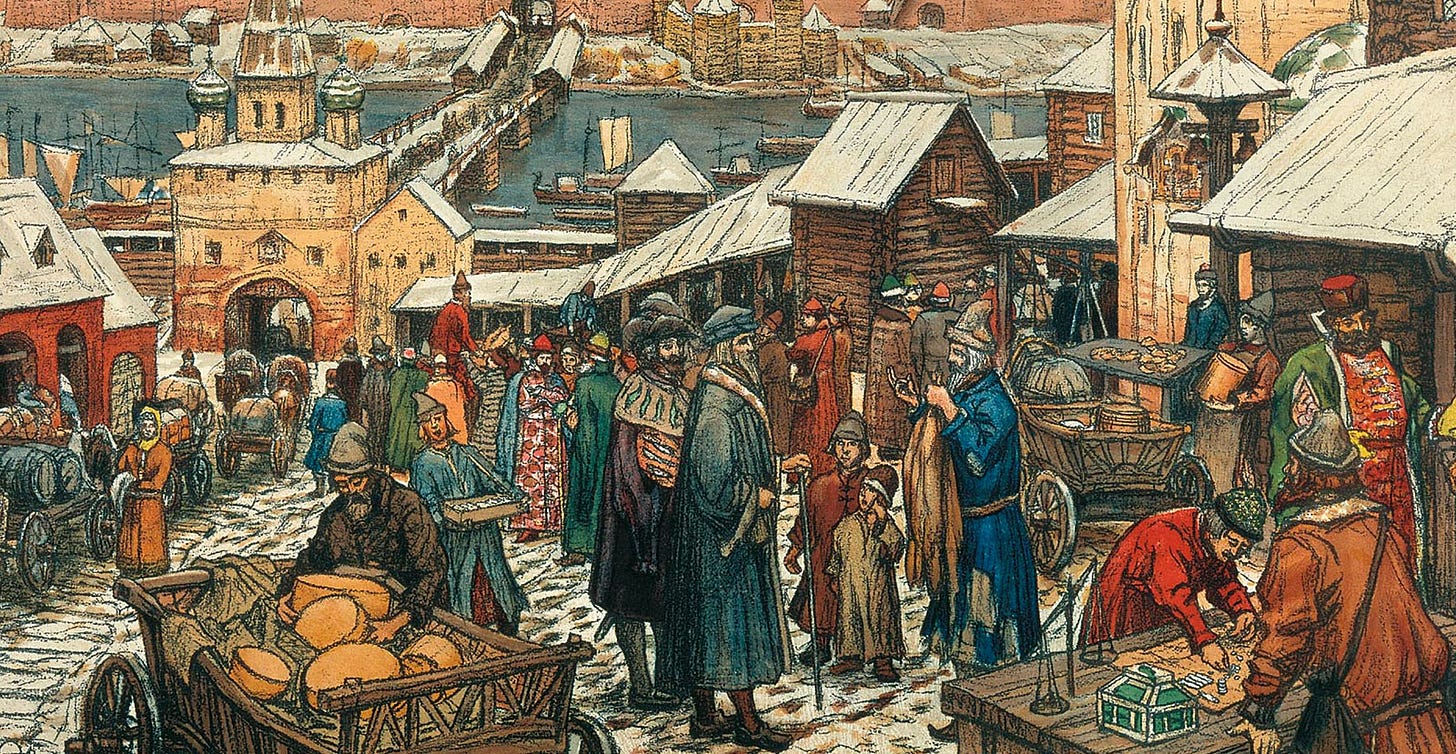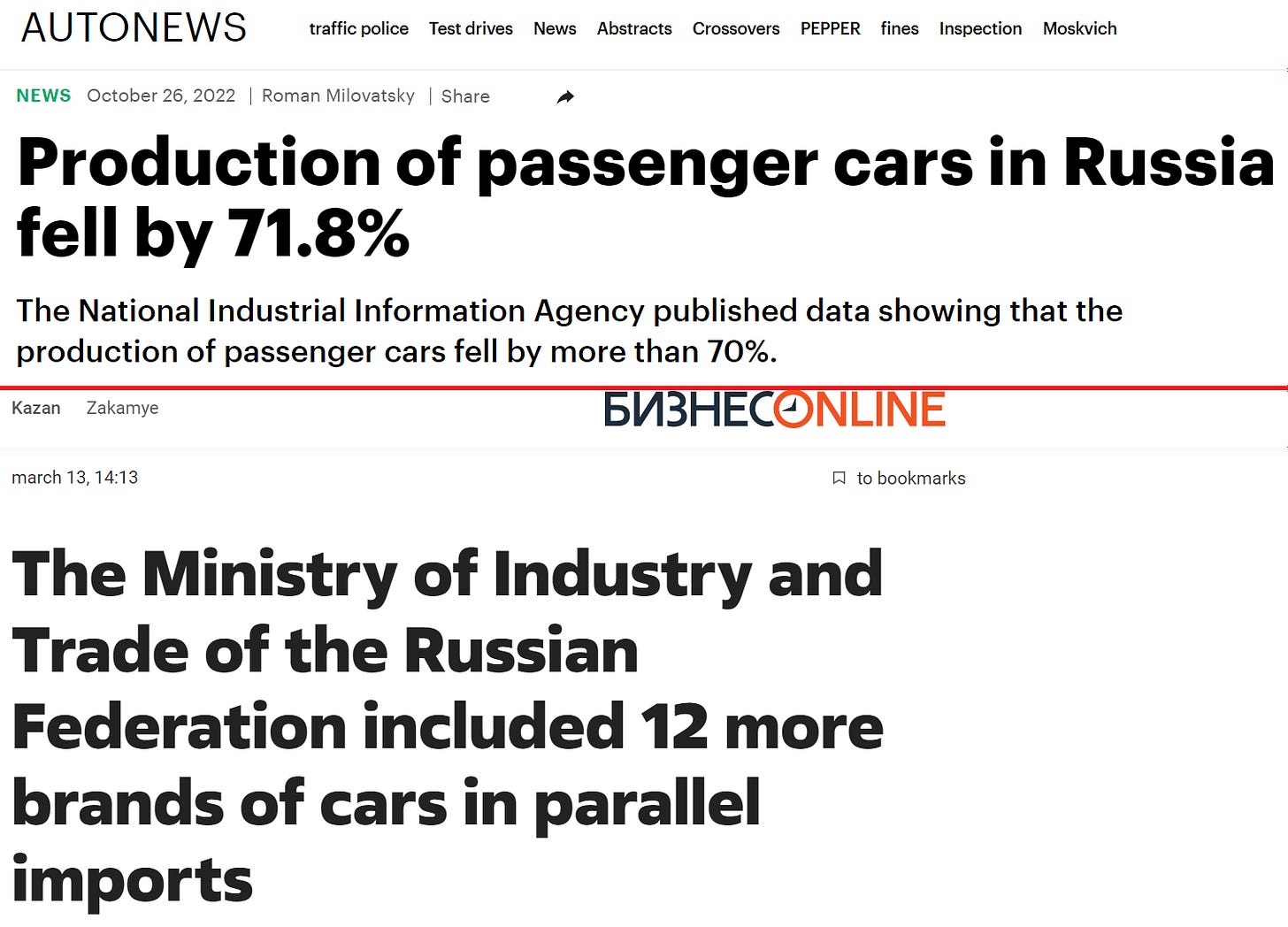“We have increased our economic sovereignty many times over. After all, what did our enemy count on? That we would collapse in 2-3 weeks or in a month,” Russian president Vladimir Putin said during his visit to the Ulan-Ude Aviation Plant last week.
Is Putin’s gloating justified? Yes … and no.
“Yes and No? No and Yes? But [callous ideologue on the internet] told me [meaningless word salad used to prop up a hopelessly warped view of Russia],” you might be screaming at your screen.
We blame both Anne Applebaum and the 5D Checkmate Wizards for shrouding Russia’s economic realities in an impenetrable fog of vapid slogans and lazy one-liners. Together they have created a mind-melting false binary in which there are apparently only two possibilities for Russia:
Total economic collapse as starving Russians hunt feral cats for sustenance.
A Golden Age of profitable, sanctions-bypassing commerce and comfortable self-sufficiency.
Maybe it’s time to expand our horizons? Yes, probably. We will need at least five blog posts to do this, though.
Where to begin?
Putin said on March 19 that Russia had made great strides towards reducing dependency on foreign imports, so let’s start with import substitution.
Import substitution: Is it urgent now?
On February 15, 2022—nine days before Russian tanks poured into Ukraine—your correspondent asked if Russia was adequately prepared for an inevitable barrage of US-imposed sanctions (which, as historians will confirm, arrived about two weeks later).
We concluded that in vital sectors such as agriculture and energy, Russia had little to worry about (to the point where it was the world’s leading exporter of wheat). In other key areas—particularly electronics and manufacturing—there was definitely room for improvement.
Just to be very clear: Import substitution is different from autarky. There was never a plan to make Russia 100% self-sufficient.
But if Russia’s “trusted western partners” were willing to knee-cap trade agreements at the behest of Washington—like they did in 2014—who knows what else they were capable of? It became a national security issue; a way to safeguard against any future monkey business.
The topic of self-sufficiency predictably took center stage in Russia after the start of the “special military operation,” and the resulting tsunami of sanctions.
Blackpills came from unexpected places.

Anastasia Tatulova, public ombudsman for small and medium-sized enterprises (SMEs) in Russia, accused officials of presenting a “distorted picture” of Russia’s self-sufficiency. The country’s real sector was almost entirely dependent on imported equipment and components, the business leader said.
Her incendiary claims were corroborated three months later by a senior Russian lawmaker.
Despite glowing economic reports from various government agencies, import substitution had “failed completely,” Senator Andrei Klishas complained in May.
“There is nothing. Our people see this in consumer goods and in many other areas,” Klishas said.
Kirill Kabanov, chairman of the National Anti-Corruption Committee, agreed.
Instead of seeking economic independence for Russia, “some” leaders were pursuing policies that made the country increasingly dependent on China, Kabanov wrote on Telegram.
We’ll provide an example to demonstrate why these gentlemen might have been so upset.
In 2018, an initiative was launched to replace imported components, used for Russia’s Sukhoi Superjet 100, with domestically produced parts.
“This issue acquired particular relevance after the start of the special military operation in Ukraine,” Vedomosti wrote in June.
After four years of diligent import substitution, Russia’s “domestic” passenger plane—which reduced the country’s dependence on Boeing and Airbus—was close to 100% Made In Russia, right?
Not exactly. As Vedomosti revealed, the Sukhoi Superjet 100 still consisted of approximately 70% imported components.
What about basic consumer goods? A July report by data-crunching agency InfoLine examined import substitution’s progress over the last 11 years (2010-2021). There were some notable successes, particularly in the food sector (imported pork had been entirely eradicated). Also, Russia manufactures 80% of its TVs—not bad.
In other areas, there’s a lot of importing:
Russia buys clothes and shoes from abroad (90 percent) … Imports also account for 80 percent of household appliances and 70 percent of cosmetics and perfumes. Analysts note that 86 percent computers and electronics are purchased from abroad.
In August—roughly six months after Washington began its economic siege against Moscow—Russian news outlet Nakanune asked for an import substitution update from Konstantin Babkin, chairman of the Russian Chamber of Commerce’s council on industrial development and competitiveness:
Nakanune: In your opinion, has something changed in the economy over the past six months? Have any conclusions been drawn?
Babkin: Objective conditions are still pushing us to build an independent economy, develop our own real sector, produce components, and move towards new industrialization.
But has the government taken any steps in this direction? No, nothing has been done … and the Central Bank is still pursuing a crazy policy.
And what we talked about at the Chamber of Commerce and Industry—about new industrialization and a change in the vector of economic policy—the government also showed no interest in this. We are still wasting time.
He concluded:
[W]hat is happening cannot be called a new industrialization. There is some kind of sluggish import substitution, but not as a new historical stage of economic development—this is definitely not the case, because the government lives in a fantasy world …
Instead of working towards self-sufficiency, Russia was becoming “someone’s appendage,” Babkin said.
Had the situation improved by the end of 2022?
In December, Radik Khasanov, general director of a manufacturing plant owned by defense conglomerate Rostec, told attendees of a Kazan business forum:
[W]e seem to be moving away from dependence on Europe, and we are moving towards dependence on China and Turkey. We say it’s import substitution, but we drag it from China. This is not import substitution, nothing like that! […]
Just yesterday there was a congress of manufacturers of medical equipment … [As it turns out,] more than 70 percent of the budget money is spent on the purchase of equipment from abroad. These are huge numbers!
But maybe the situation isn’t as dire as it sounds?
Russia’s Higher School of Economics (HSE) released a report last month extolling the successes of import substitution, while admitting that in some sectors more work needed to be done to reduce dependency on foreign imports.

According to HSE:
Russia has been pursuing a policy of import substitution for about 15 years and has been able to significantly reduce the share of imports in many items. In recent years, the use of imports in the industrial complex of Russia did not exceed 40%. This is significantly lower than that of Canada, the Netherlands, Poland, Australia, Germany, Saudi Arabia and a number of other major economies, and about the same level as the US and India.
At the same time, in certain sectors of the domestic economy, dependence on imports still remains critical. Under the pressure of sanctions, the policy of import substitution should take into account the need to ensure technological sovereignty while maintaining the openness of the economy and reorientation to the markets of friendly countries, experts emphasize.
We don’t think this report should be completely discounted, but we should point out that HSE is not exactly non-partisan: It’s a popular breeding ground for Russia’s neoliberal elite (who turned Russia into a one-way resource pipeline for the Collective West). Also, the university’s president, Alexander Shokhin, has been a member of United Russia’s Supreme Council since 2009. We’re not saying anything, we’re just sayin’.
So there you have it. In conclusion, import substitution has been a massive fail or, alternatively, a glorious success, depending on whom you ask. Aren’t you glad you read this far?
Maybe parallel imports are good enough?
Anyway, maybe import substitution is overrated? You can always trade with friendly states, and/or bypass US sanctions using parallel imports (when electronics purportedly destined for Armenia magically end up in Russia, for example).
The Russia-China economic relationship deserves a dedicated post—so stay tuned for that.
Parallel imports aren’t a terrible option—but you’re still risking interventions from Washington/Brussels. Which is what has just happened in Turkey, reportedly.
It’s also not great for encouraging domestic production. So, for example, when domestic automobile production collapses by 70%, probably you should try to rescue your own auto industry, instead of sneaking foreign cars across the border?
None of this should take away from the fact that after 10,000+ sanctions, Russians are still just doin’ their thing—getting by under less than ideal circumstances. They’re pros and they do it with great dignity.
If you found this blog post informative maybe you would be interested in subscribing to Edward Slavsquat?







Very informative, detailed, highly appreciated. Thanks, Riley!
👍🏻 Insightful and appreciated. Thank you!